Texas softens strict voter ID law to comply with federal court ruling


In July, the U.S. 5th Circuit Court of Appeals ruled that Texas' strict voter ID law has a "discriminatory effect" that violates the U.S. Voting Rights Act, potentially disenfranchising more than 600,000 registered voters, most of them poor or minorities. On Wednesday, Texas announced a compromise worked out with the U.S. Justice Department and minority rights groups that had filed suit over the 2011 law.
Under the agreement, which requires approval from U.S. District Judge Nelva Gonzales Ramos, registered voters without one of the seven sanctioned forms of photo ID will be allowed to vote in November after signing an affidavit affirming that they are U.S. citizens and producing an alternate form of proof of ID, such as a paycheck or utility bill. Texas will also have to spend $2.5 million to publicize the new rules. The state has already spent $3.5 million defending the 2011 voter ID law.
Chad Dunn, a Houston lawyer working for the minorities rights groups, called the compromise "a critical leap forward," while a spokesman for Texas Attorney General Ken Paxton said "this case isn't over." Texas will revisit the law after November, possibly taking its case all the way to the Supreme Court, Paxton signaled. The 5th Circuit Court of Appeals, among the most conservative appellate courts, also ordered the lower court to consider whether Texas intended to discriminate against minorities, a steeper finding that could put Texas back on a list of states that need prior federal approval to change electoral laws.
Subscribe to The Week
Escape your echo chamber. Get the facts behind the news, plus analysis from multiple perspectives.

Sign up for The Week's Free Newsletters
From our morning news briefing to a weekly Good News Newsletter, get the best of The Week delivered directly to your inbox.
From our morning news briefing to a weekly Good News Newsletter, get the best of The Week delivered directly to your inbox.
Create an account with the same email registered to your subscription to unlock access.
Sign up for Today's Best Articles in your inbox
A free daily email with the biggest news stories of the day – and the best features from TheWeek.com
Peter has worked as a news and culture writer and editor at The Week since the site's launch in 2008. He covers politics, world affairs, religion and cultural currents. His journalism career began as a copy editor at a financial newswire and has included editorial positions at The New York Times Magazine, Facts on File, and Oregon State University.
-
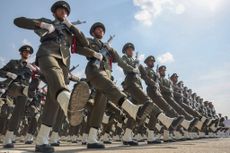 'A direct, protracted war with Israel is not something Iran is equipped to fight'
'A direct, protracted war with Israel is not something Iran is equipped to fight'Instant Opinion Opinion, comment and editorials of the day
By Harold Maass, The Week US Published
-
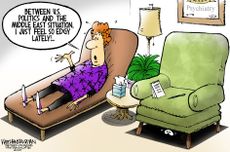 Today's political cartoons - April 17, 2024
Today's political cartoons - April 17, 2024Cartoons Wednesday's cartoons - political anxiety, jury sorting hat, and more
By The Week US Published
-
 Arid Gulf states hit with year's worth of rain
Arid Gulf states hit with year's worth of rainSpeed Read The historic flooding in Dubai is tied to climate change
By Peter Weber, The Week US Published
-
 ATF finalizes rule to close 'gun show loophole'
ATF finalizes rule to close 'gun show loophole'Speed Read Biden moves to expand background checks for gun buyers
By Peter Weber, The Week US Published
-
 Hong Kong passes tough new security law
Hong Kong passes tough new security lawSpeed Read It will allow the government to further suppress all forms of dissent
By Peter Weber, The Week US Published
-
 France enshrines abortion rights in constitution
France enshrines abortion rights in constitutionspeed read It became the first country to make abortion a constitutional right
By Peter Weber, The Week US Published
-
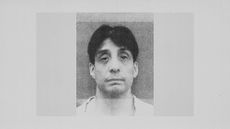 Texas executes man despite contested evidence
Texas executes man despite contested evidenceSpeed Read Texas rejected calls for a rehearing of Ivan Cantu's case amid recanted testimony and allegations of suppressed exculpatory evidence
By Peter Weber, The Week US Published
-
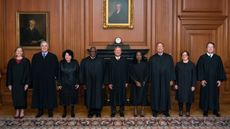 Supreme Court wary of state social media regulations
Supreme Court wary of state social media regulationsSpeed Read A majority of justices appeared skeptical that Texas and Florida were lawfully protecting the free speech rights of users
By Peter Weber, The Week US Published
-
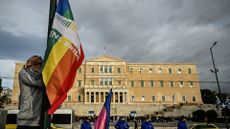 Greece legalizes same-sex marriage
Greece legalizes same-sex marriageSpeed Read Greece becomes the first Orthodox Christian country to enshrine marriage equality in law
By Peter Weber, The Week US Published
-
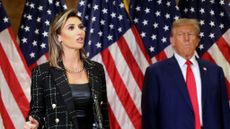 Trump and his lawyer Alina Habba have a rough day in defamation court
Trump and his lawyer Alina Habba have a rough day in defamation courtSpeed Read Trump's audible grousing as E. Jean Carroll testified earned him a warning he could be thrown out of court, and Habba showed she 'doesn't know what the hell she's doing'
By Peter Weber, The Week US Published
-
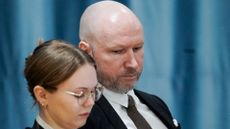 Anders Breivik to testify in prison isolation lawsuit against Norway
Anders Breivik to testify in prison isolation lawsuit against NorwaySpeed Read Far-right fanatic who killed 77 people in 2011 claims he has received 'inhuman treatment' in custody
By The Week UK Published